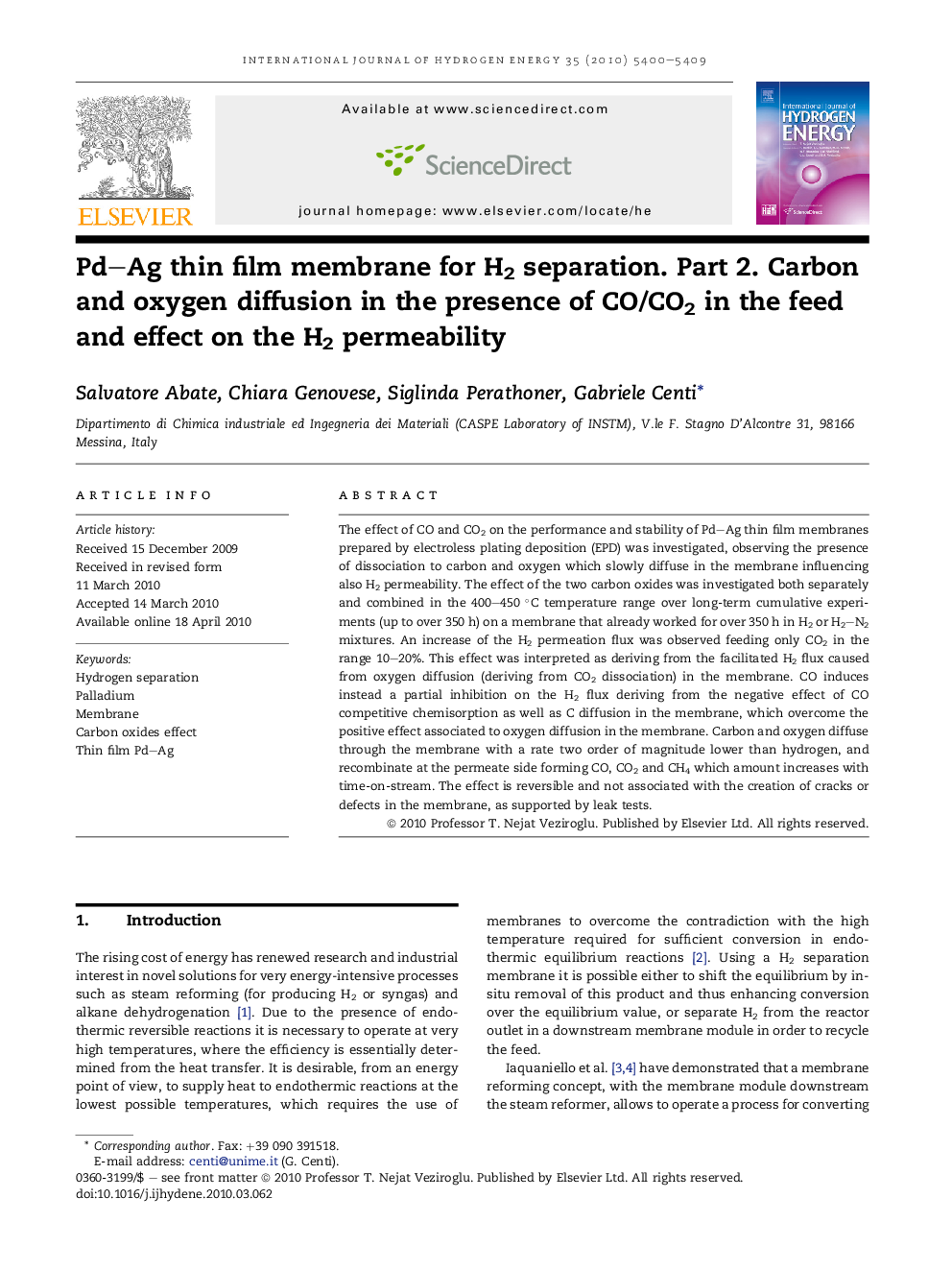| Article ID | Journal | Published Year | Pages | File Type |
|---|---|---|---|---|
| 1280561 | International Journal of Hydrogen Energy | 2010 | 10 Pages |
The effect of CO and CO2 on the performance and stability of Pd–Ag thin film membranes prepared by electroless plating deposition (EPD) was investigated, observing the presence of dissociation to carbon and oxygen which slowly diffuse in the membrane influencing also H2 permeability. The effect of the two carbon oxides was investigated both separately and combined in the 400–450 °C temperature range over long-term cumulative experiments (up to over 350 h) on a membrane that already worked for over 350 h in H2 or H2–N2 mixtures. An increase of the H2 permeation flux was observed feeding only CO2 in the range 10–20%. This effect was interpreted as deriving from the facilitated H2 flux caused from oxygen diffusion (deriving from CO2 dissociation) in the membrane. CO induces instead a partial inhibition on the H2 flux deriving from the negative effect of CO competitive chemisorption as well as C diffusion in the membrane, which overcome the positive effect associated to oxygen diffusion in the membrane. Carbon and oxygen diffuse through the membrane with a rate two order of magnitude lower than hydrogen, and recombinate at the permeate side forming CO, CO2 and CH4 which amount increases with time-on-stream. The effect is reversible and not associated with the creation of cracks or defects in the membrane, as supported by leak tests.
